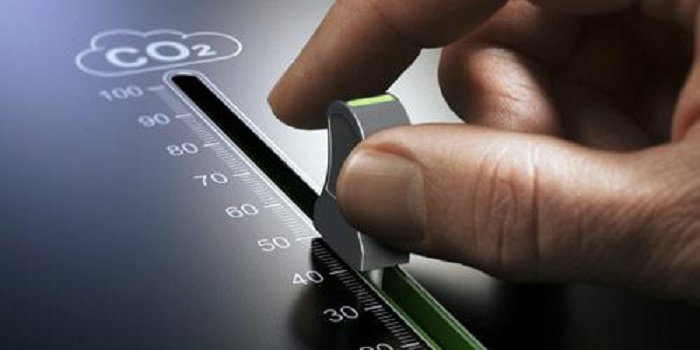How to keep government fleets in check with emissions monitoring

Increasingly, fleet managers are being charged with meeting green initiatives and emissions standards to embrace sustainable practices. For example, Executive Order 14057 calls for federal agencies to be 100% zero emission for light-duty vehicles by 2027 and all vehicles by 2035.
While state and local entities are not included in the order, many jurisdictions are setting similar targets. For example, California has mandated 70% new zero-emission vehicle sales by 2030, and Minnesota’s Climate Action Framework sets a goal of reducing emissions by 50% by 2030.
Sourcewell is dedicated to helping fleet managers make the industry more sustainable through its cooperative contracts with eco-friendly suppliers and vendors.
Transparency in emissions
Citizens today are demanding more transparency from government bodies about their environmental impact and sustainable practices.
Vehicles release about 1.4 billion tons of greenhouse gases (GHGs) each year and are the largest contributor to climate change. Citizens expect information about what their state and local governments are doing to change and how they are progressing against goals. Tracking GHGs and eco-friendly and sustainable programs and their results will be crucial.
Tracking emissions will also be part of fulfilling grants or incentive programs or meeting federal, state, or local compliance requirements.
Emissions monitoring in government fleets
Tracking gives you the data that you need for transparency and enables you to uncover factors that contribute heavily to GHG emissions. This data provides various insights into your operations that you can address.
Fuel consumption
Fuel costs make up to 60% of most fleet managers’ budgets, so reducing your fuel consumption can save money and help you meet sustainability goals. Telematics and tracking can uncover wasted fuel due to:
- Idling time: The Argonne National Laboratory estimates that unnecessary idle time wastes more than $11 billion annually and contributes significantly to GHG emissions.
- Poor driving behavior: Aggressively starting and stopping, speeding, improper shifting, and other poor driving habits consume more fuel and put greater wear and tear on vehicles. Providing training for better driving habits can reduce fuel consumption.
- Poor performance: Vehicles that operate improperly are inefficient and create more emissions. The correct tracking mechanisms can monitor engine health and provide data for predictive maintenance to ensure peak performance.
- Route optimization: By optimizing your fleet routing, you can minimize drive time and emissions. Software can help you map more efficient routes, including real-time rerouting in case of congestion.
- Tire pressure: Keeping tires inflated at the proper pressure can improve mileage by more than 3%. While that may not sound like much, vehicles with underinflated tires add 1.5 extra tons of GHG emissions annually.
Electric and hybrid vehicle procurement
To meet the most rigid emissions standards, government entities will need to accelerate the purchase of EVs and hybrid vehicles. Hybrid vehicles use more fossil fuels during operation, while EVs produce no tailpipe emissions.
Proposed standards for the auto industry could reduce carbon dioxide emissions by nearly 10 billion tons by 2055, but there’s a long way to go because EVs account for less than 10% of all auto sales. State and local governments can swap out existing vehicles for more eco-friendly alternatives when it’s time for fleet vehicle replacements.
Sourcewell can help. With its cooperative purchasing agreements with vehicle suppliers, it has competitively sourced, ready-to-use contracts in place to save your agency money.
Tracking GHG emissions
Small, local fleets may be able to use spreadsheets to track miles driven and fuel consumption, but as fleets grow, more formal and automated tracking systems will be required to comply with sustainable mandates.
You can now use fleet fuel cards to track how much gas is used. The Environmental Protection Agency also offers a free, simplified greenhouse gas emissions calculator that can help you estimate your overall GHG production. Data loggers for internal combustion engines can help track mileage and engine efficiency.
For more in-depth information, telematics is the way to go. It can track actual driving data, including the many factors that impact emissions. Those operating large fleets or requiring third-party reporting for certification may need to install the proper tracking equipment and software.
Sourcewell can help with cooperative purchasing agreements for vendors and suppliers of emissions tracking and telematics.
Competitively sourced, ready-to-go contracts for emissions tracking suppliers
Sourcewell provides access to ready-to-use contracts with competitively sourced suppliers and leverages the bulk buying power from 50,000 government agencies, universities, and tribal organizations.
You can learn more about how cooperative purchasing works and how it can save you time and money to help meet your sustainability and emissions monitoring goals.
See how easy it is to smoothly adhere to any greening initiatives using Sourcewell’s cooperative purchasing program. Streamline the process by choosing from hundreds of suppliers already on contract. Sourcewell’s procurement experts competitively solicit and award contracts on behalf of 50,000 participating agencies in North America. Check out our contracts here.


